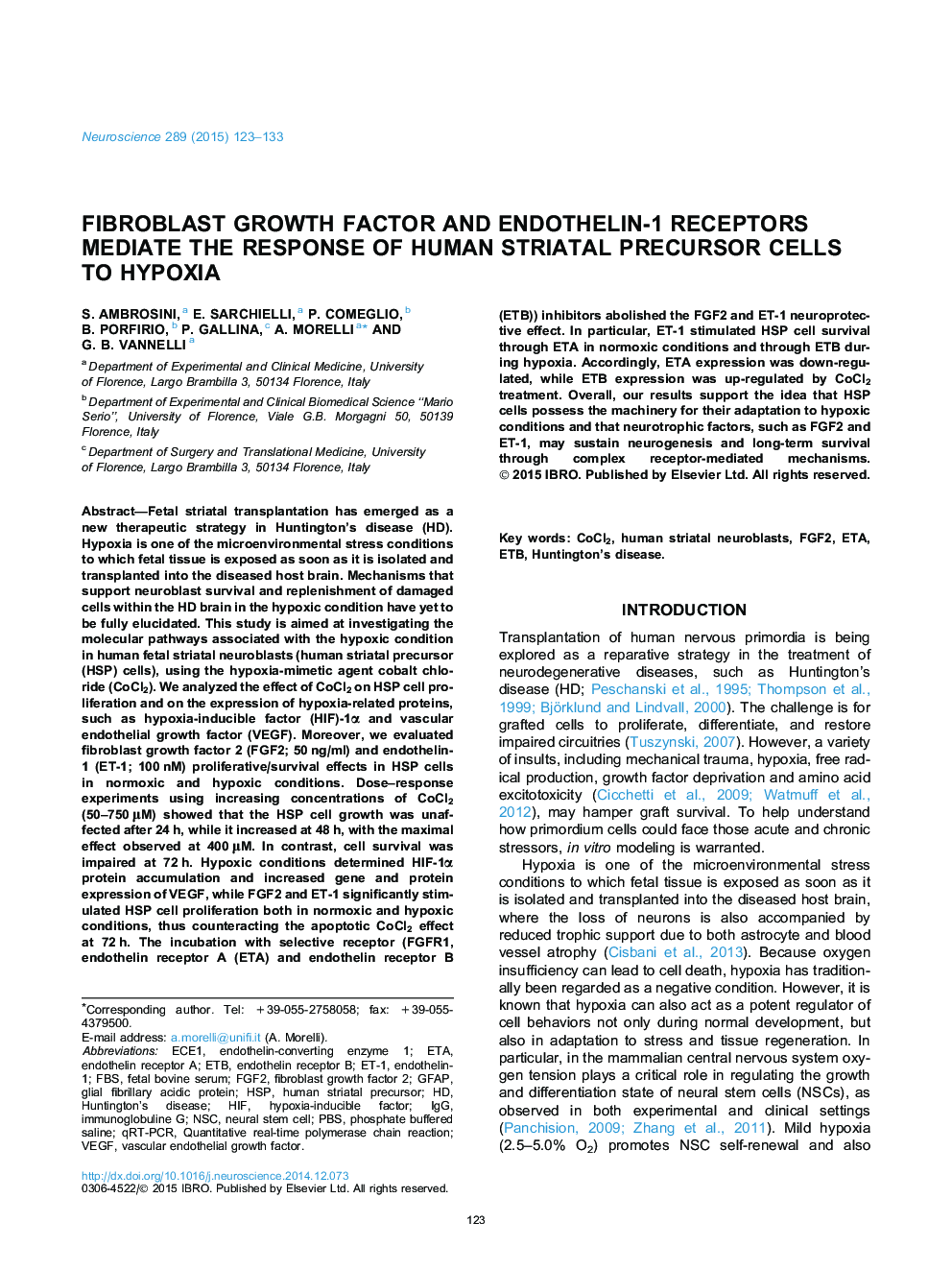| Article ID | Journal | Published Year | Pages | File Type |
|---|---|---|---|---|
| 4337516 | Neuroscience | 2015 | 11 Pages |
Abstract
Fetal striatal transplantation has emerged as a new therapeutic strategy in Huntington's disease (HD). Hypoxia is one of the microenvironmental stress conditions to which fetal tissue is exposed as soon as it is isolated and transplanted into the diseased host brain. Mechanisms that support neuroblast survival and replenishment of damaged cells within the HD brain in the hypoxic condition have yet to be fully elucidated. This study is aimed at investigating the molecular pathways associated with the hypoxic condition in human fetal striatal neuroblasts (human striatal precursor (HSP) cells), using the hypoxia-mimetic agent cobalt chloride (CoCl2). We analyzed the effect of CoCl2 on HSP cell proliferation and on the expression of hypoxia-related proteins, such as hypoxia-inducible factor (HIF)-1α and vascular endothelial growth factor (VEGF). Moreover, we evaluated fibroblast growth factor 2 (FGF2; 50 ng/ml) and endothelin-1 (ET-1; 100 nM) proliferative/survival effects in HSP cells in normoxic and hypoxic conditions. Dose-response experiments using increasing concentrations of CoCl2 (50-750 μM) showed that the HSP cell growth was unaffected after 24 h, while it increased at 48 h, with the maximal effect observed at 400 μM. In contrast, cell survival was impaired at 72 h. Hypoxic conditions determined HIF-1α protein accumulation and increased gene and protein expression of VEGF, while FGF2 and ET-1 significantly stimulated HSP cell proliferation both in normoxic and hypoxic conditions, thus counteracting the apoptotic CoCl2 effect at 72 h. The incubation with selective receptor (FGFR1, endothelin receptor A (ETA) and endothelin receptor B (ETB)) inhibitors abolished the FGF2 and ET-1 neuroprotective effect. In particular, ET-1 stimulated HSP cell survival through ETA in normoxic conditions and through ETB during hypoxia. Accordingly, ETA expression was down-regulated, while ETB expression was up-regulated by CoCl2 treatment. Overall, our results support the idea that HSP cells possess the machinery for their adaptation to hypoxic conditions and that neurotrophic factors, such as FGF2 and ET-1, may sustain neurogenesis and long-term survival through complex receptor-mediated mechanisms.
Keywords
HspETACoCl2ETBECE1HIFFGF2ET-1immunoglobuline Gendothelin-converting enzyme 1qRT-PCRGFAPNSCIgGFBSPBSendothelin-1Huntington’s diseasefetal bovine serumNeural stem cellfibroblast growth factor 2Hypoxia-inducible factorVascular endothelial growth factorVascular Endothelial Growth Factor (VEGF)Phosphate buffered salinequantitative real-time polymerase chain reactionGlial fibrillary acidic proteinendothelin receptor Aendothelin receptor B
Related Topics
Life Sciences
Neuroscience
Neuroscience (General)
Authors
S. Ambrosini, E. Sarchielli, P. Comeglio, B. Porfirio, P. Gallina, A. Morelli, G.B. Vannelli,
